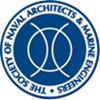船舶尾迹的气泡夹带和运输建模:使用混合RANS/LES方法的进展
IF 1
4区 工程技术
Q3 ENGINEERING, CIVIL
引用次数: 8
摘要
本文介绍了使用雷诺平均Navier-Stokes/大涡模拟(RANS/LES)混合方法模拟船舶周围气泡夹带和传输的进展。先前使用基于玻尔兹曼的多分散气泡流模型的结果表明,LES在预测气泡向深度的传输方面比RANS表现得更好,这是预测气泡尾流的一个非常重要的过程。然而,标准DES型模型无法预测气泡夹带、破碎和聚结模型所需的适当湍流动能(TKE)和耗散。我们提出了在LES区域获得TKE和耗散的不同方法,并在复杂性增加的情况下对其进行评估,包括各向同性湍流的衰减、平板边界层和研究船Athena尾流。指数加权平均用于估计统计数据,并获得具有解析湍流的区域中的平均量。TKE在测试的病例中得到了令人满意的预测。在SST模型中提出了一个修正的ω方程来隐式计算耗散,显示出比标准DES模型更好的结果,尽管还需要进一步的改进。提出了一种混合的RANS/LES方法,该方法的重点是在流动穿过RANS/LES界面时保持总TKE,正如之前对区域方法所做的那样,但尝试对适用于LES的区域进行类似DES的检测,这对于涉及复杂几何形状的泡状流的大规模计算至关重要。导出了动态强迫项的一般形式,以通过控制器将建模的TKE转换为解析的TKE,从而确保所转换的能量的适当守恒。经验证,该模型对网格大小或时间步长不敏感。对DDES和所提出的TKE守恒混合RANS/LES方法的改进显示出令人鼓舞的结果,尽管还讨论了剩余的挑战。本文章由计算机程序翻译,如有差异,请以英文原文为准。
Modeling Bubble Entrainment and Transport for Ship Wakes: Progress Using Hybrid RANS/LES Methods
This article presents progress on modeling bubble entrainment and transport around ships using hybrid Reynolds-averaged Navier-Stokes/large eddy simulation (RANS/ LES) methods. Previous results using a Boltzmann-based polydisperse bubbly flow model show that LES perform better than RANS in predicting transport of bubbles to depth, a very important process to predict bubbly wakes. However, standard DES-type models fail to predict proper turbulent kinetic energy (TKE) and dissipation, needed by bubble entrainment, breakup, and coalescence models. We propose different approaches to obtain TKE and dissipation in LES regions and evaluate them for cases of increasing complexity, including decay of isotropic turbulence, a flat plate boundary layer, and the flow in the wake of the research vessel Athena. An exponential weighted average is used to estimate statistics and obtain the averaged quantities in regions with resolved turbulence. The TKE is satisfactorily predicted in the cases tested. A modified ω equation in the SST model is proposed to implicitly compute the dissipation, showing superior results than the standard DES models, although further improvements are necessary. A hybrid RANS/LES approach is proposed, which focused at conserving total TKE as the flow crosses RANS/LES interfaces, as previously performed for zonal approaches but attempting a DES-like detection of regions suitable for LES, critical for large-scale computations of bubbly flows involving complex geometries. A general form of a dynamic forcing term is derived to transfer the modeled TKE to resolved TKE with a controller to guarantee proper conservation of the energy transferred. It was verified that the model is not sensitive to grid size or time step. Improvements to DDES and the proposed TKE-conserving hybrid RANS/ LES method show encouraging results, although remaining challenges are discussed.
求助全文
通过发布文献求助,成功后即可免费获取论文全文。
去求助
来源期刊

Journal of Ship Research
工程技术-工程:海洋
CiteScore
2.80
自引率
0.00%
发文量
12
审稿时长
6 months
期刊介绍:
Original and Timely technical papers addressing problems of shipyard techniques and production of merchant and naval ships appear in this quarterly publication. Since its inception, the Journal of Ship Production and Design (formerly the Journal of Ship Production) has been a forum for peer-reviewed, professionally edited papers from academic and industry sources. As such, it has influenced the worldwide development of ship production engineering as a fully qualified professional discipline. The expanded scope seeks papers in additional areas, specifically ship design, including design for production, plus other marine technology topics, such as ship operations, shipping economic, and safety. Each issue contains a well-rounded selection of technical papers relevant to marine professionals.
 求助内容:
求助内容: 应助结果提醒方式:
应助结果提醒方式:


